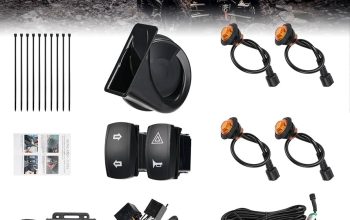The D16Z6 and D16Y8 are two legendary engines that have played a crucial role in Honda’s legacy of producing high-revving, fuel-efficient powerplants. As a car enthusiast with a passion for Honda vehicles, I’ve had the pleasure of experiencing both of these engines firsthand. In this comprehensive comparison, we’ll explore the various aspects of these engines, including their specifications, performance, technology, aftermarket support, reliability, affordability, and more.
D16Z6 vs D16Y8 Engines – Head to Head to Comparison
Engine Specifications
The D16Z6 and D16Y8 are both part of Honda’s D-series of engines, featuring a 1.6-liter displacement. The D16Z6 is a single overhead cam (SOHC) engine, while the D16Y8 boasts a dual overhead cam (DOHC) configuration. This difference in camshaft configuration greatly influences their valve train setups and performance characteristics. Additionally, the D16Z6 has a slightly higher compression ratio compared to the D16Y8, contributing to its increased power output.
Performance and Drivability
When it comes to performance, the D16Z6 and D16Y8 demonstrate their unique traits on the road. The D16Z6, with its VTEC system, delivers a noticeable surge of power in the higher rev range, making it more suitable for spirited driving and enthusiasts seeking an engaging experience. On the other hand, the D16Y8’s dual camshaft design provides smoother power delivery across the RPM range, making it a more balanced choice for daily driving and commuting.
In terms of acceleration, the D16Z6’s VTEC engagement gives it an edge in 0-60 mph times, especially when the engine is optimized for performance. However, the D16Y8 offers a smoother power curve and slightly better fuel efficiency, making it more suitable for long highway cruises.
Engine Technology and Features
The VTEC system, a hallmark of Honda’s engineering prowess, is present in both engines. However, the VTEC engagement and camshaft profiles differ between the D16Z6 and D16Y8, leading to varying performance characteristics. Additionally, both engines comply with emission standards and incorporate technologies to reduce their environmental impact.
To manage heat effectively, the D16Z6 and D16Y8 come with efficient cooling systems, ensuring optimal operating temperatures even during demanding driving conditions. Moreover, their fuel delivery systems, though similar, have minor differences that contribute to their distinct performance outputs.
Aftermarket Support and Modifications
Both the D16Z6 and D16Y8 have significant aftermarket support, with a plethora of performance parts available for enthusiasts looking to enhance their engine’s capabilities. From intake and exhaust upgrades to performance cams and engine tuning solutions, the possibilities for both engines are vast.
In terms of forced induction, the D16Z6 and D16Y8 can handle mild turbocharging or supercharging setups with proper tuning and supporting modifications. However, the D16Z6’s VTEC system and higher compression ratio make it slightly more responsive to forced induction applications.
Real-world Reliability and Durability
As an enthusiast who values long-term reliability, I must address the common issues faced by both engines. The D16Z6 is known for its robust build and reliability, often providing years of trouble-free service when properly maintained. However, some users have reported issues with VTEC solenoids and oil leaks, which can be mitigated with regular maintenance.
Similarly, the D16Y8 is generally reliable, but its dual overhead cam design may require more attention to valve adjustments and timing belt replacements. Additionally, users have noted occasional oil consumption and minor oil leak issues with the D16Y8.
Price and Affordability
When considering the cost factor, both engines offer excellent value for money. The D16Z6 is often considered a budget-friendly option due to its availability and popularity. On the other hand, the D16Y8, being a more modern engine with improved technology, may command a slightly higher price in the used engine market.
Final Thoughts
The D16Z6 and D16Y8 are iconic engines from Honda’s D-series, each with its own unique strengths and characteristics. The D16Z6, with its VTEC system and performance-oriented nature, is a great choice for enthusiasts seeking a thrilling driving experience. On the contrary, the D16Y8’s dual overhead cam design and smoother power delivery make it more suitable for daily driving and fuel efficiency.
As an enthusiast, I appreciate the aftermarket support for both engines, providing ample opportunities for performance upgrades. Moreover, the overall reliability and durability of these engines ensure that they can serve their owners well with proper maintenance.
Ultimately, the choice between the D16Z6 and D16Y8 depends on individual preferences and driving requirements. Regardless of the chosen engine, Honda’s engineering excellence shines through in these iconic powerplants. Whether you prefer the raw excitement of the D16Z6 or the balanced drivability of the D16Y8, both engines exemplify Honda’s commitment to delivering exceptional performance and efficiency.
